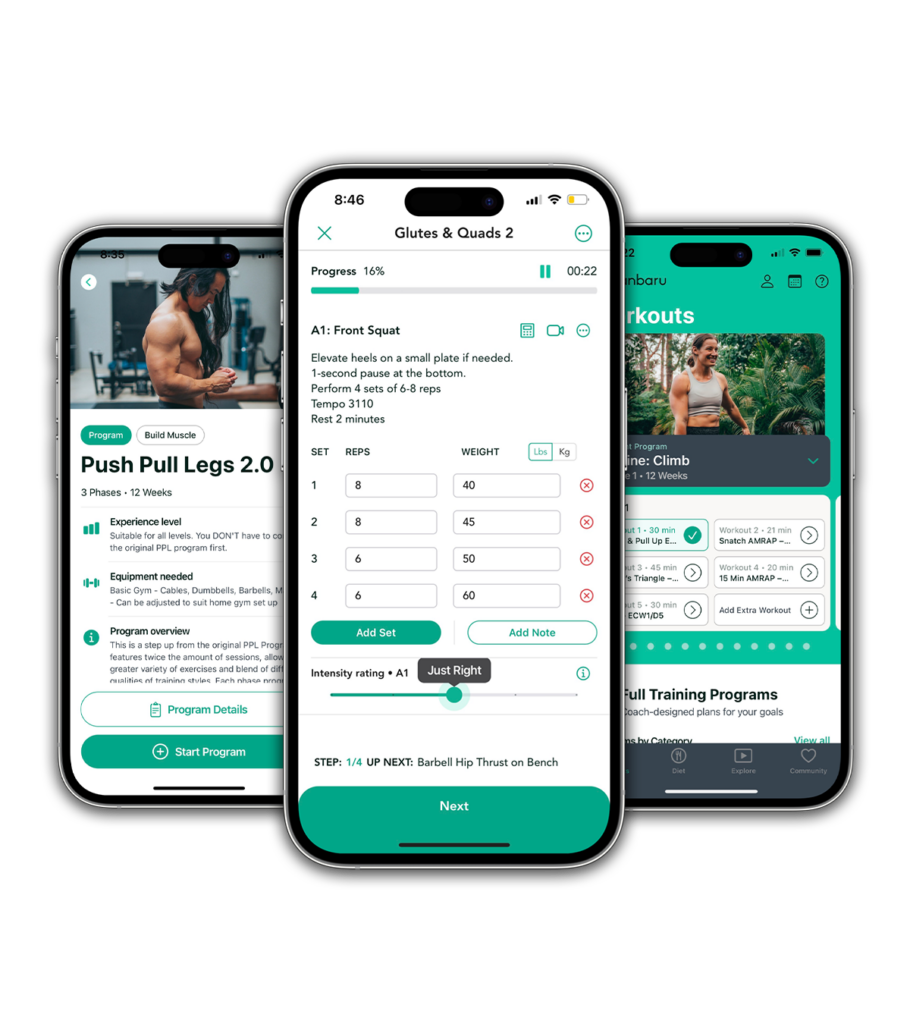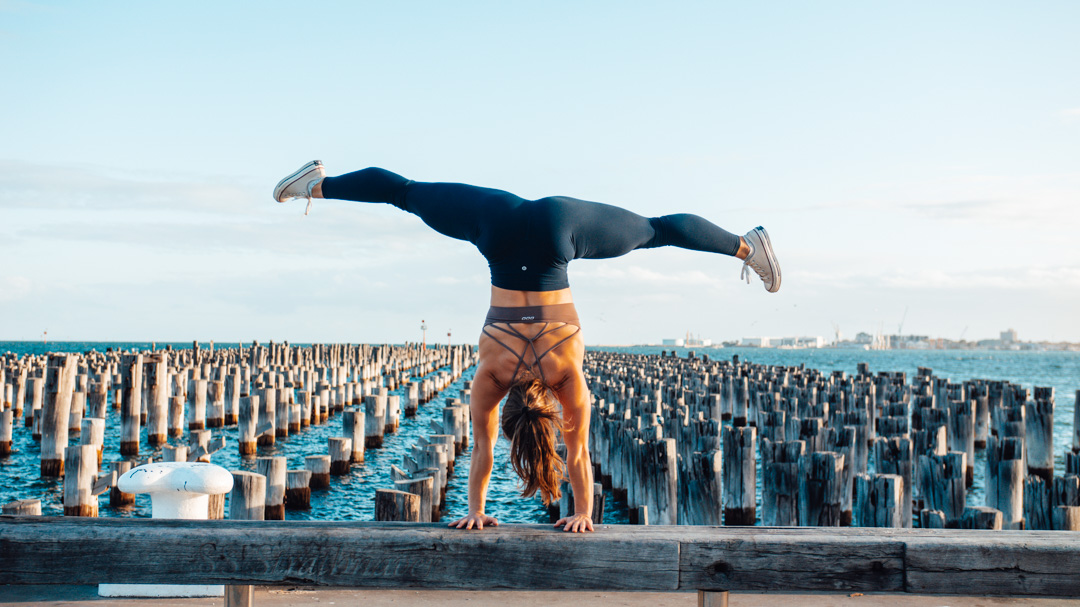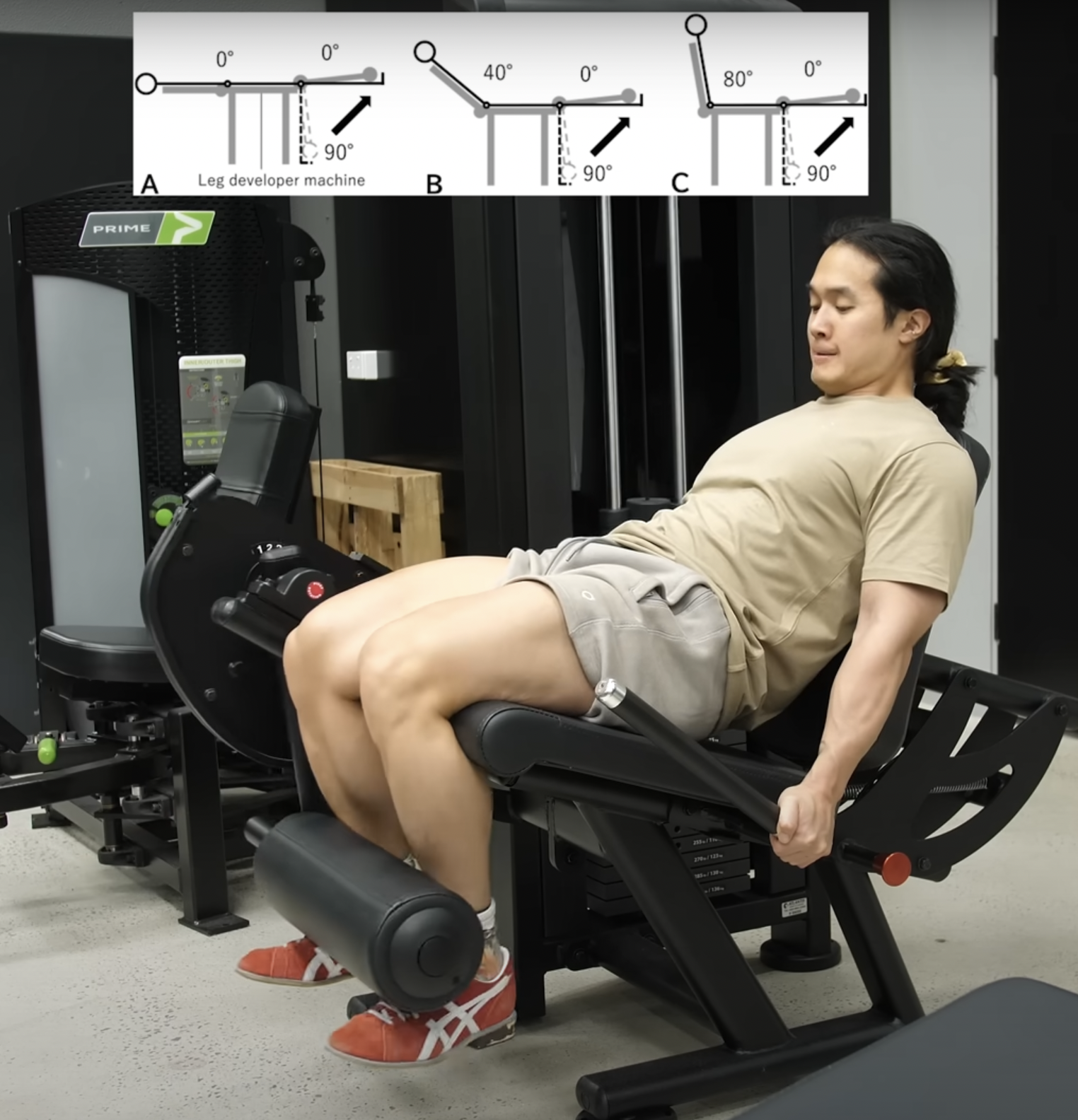Float to handstand drills are some of the most important for your progression in handstand holds, and therefore also handstand walks. Floats teach us to slowly and gently shift into the balance point in a handstand. They are a gentle movement and require you to engage the hands as you float off a box, wall, band or other object into your handstand hold or walk.
This is where most people go wrong – they are in a hurry to be in a handstand, so they rush the shift in position from the moment their weight is on another surface to the moment they are fully supporting their own weight in a handstand. Kicking, shoving, or otherwise using momentum to get off a secondary base of support fails to build the understanding of where the body weight needs to be centred in the hand for a successful handstand.
As you watch through the float drills below, think about how you could slow it down, be gentle, and let your brain focus on what your hands and body weight are doing, instead of thinking about being “off” or “on” the secondary base of support.
Box float to handstand
What is it?
A float to handstand drill that leaves more weight on the box and requires a more substantial and obvious weight shift than when you float from a wall.
What You’ll Need
A 20″ x 24″ x 30″ box, and maybe some extra bumper plates if you need a higher box.
Technique
From a pike on the box (you can bend your legs if you need to), lift one leg up toward the sky and feel the weight shift into your hands from your feet. Keep shifting until the leg remaining on the box gets so light that it feels like less than a gram of your body weight is left in the box. Grip your fingers into the floor and allow the foot to lift off the box.
Common Mistakes
Pushing or kicking off the box. No float drills involve kicking.
Band in rack float to handstand
What You’ll Need
A couple of thick resistance bands, a squat rack or rig with uprights that you can set the resistance bands in at roughly the height of your neck or chin.
Technique
Climb your legs up the squat rack so that you can hook your feet into the band. Stretch your legs up so that you can now rest your shins into the band. If the band is on your thighs, raise the band up higher. Get into a tall handstand position and separate your legs. Bring the leading leg over your body until you feel the weight of the leg still in the band start to feel light. Continue shifting until there is hardly any weight remaining in the band and the band is no longer wobbling. See if you can lift the leg off the band. If you can’t lift it off, you need to keep shifting further forward into your hands.
Common Mistakes
Leaving way too much body weight in the band and trying to kick out of it.
Float to handstand from wall
What is it?
The smallest movement out of all the float to handstand drills. This makes it both the easiest because it doesn’t take much shift to get into the float, and also the hardest because you have to be more conscious of a less obvious shift in weight from the heels of the hands to the middle of the hands.
What You’ll Need
A wall.
Technique
From a wall-facing handstand, separate your legs and allow the leading leg to gently pull you off the wall. Move as slowly as you can. At some point, you will feel almost no weight left on the wall in the second leg, and your second foot will leave the wall when your weight has fully shifted into your hands. Do not rush the legs together at this point, just hold that position by gripping the ground.
Common Mistakes
Pushing or kicking off the wall, or rushing to close the legs.
Another mistake is not gripping the ground or pushing the fingers into the floor, so when the weight shifts there’s nowhere to go but to fall over the top.
Box straddle press
What is it?
A double-leg float (which is how we regress the press to handstand!)
What You’ll Need
A box.
Technique
From a pike on the box, shift your legs wide then aggressively (but slowly) shift your weight over your hands until your feet lift off the box. You will need to push harder into the floor with your legs than with the single leg variations of this.

Ready to workout?
Follow proven programs written by expert coaches, delivered in an easy-to-use app built by lifters, for lifters.





